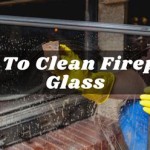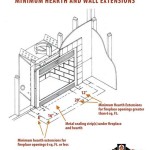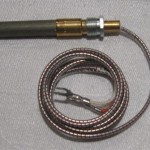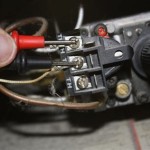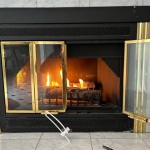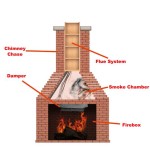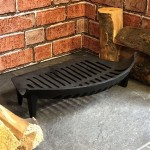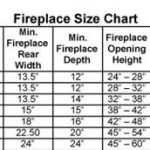Direct Vent Propane Fireplace Reviews: A Comprehensive Guide
Direct vent propane fireplaces offer a convenient and efficient heating solution for homes, providing the ambiance of a traditional fireplace without the complexities and mess associated with wood-burning models. These fireplaces utilize a sealed combustion system, drawing air from outside and venting exhaust directly outdoors through a coaxial pipe. This design enhances energy efficiency and indoor air quality, making them a popular choice for homeowners seeking supplemental heat and aesthetic appeal. Evaluating different models and understanding key features are essential before making a purchase. This article presents a detailed overview of direct vent propane fireplaces, outlining the benefits, key considerations, and various models available, based on user reviews and industry standards.
Several factors contribute to the widespread adoption of direct vent propane fireplaces. Unlike traditional fireplaces that can lose significant heat through the chimney, direct vent models retain more heat within the home, resulting in lower energy consumption and reduced heating costs. The sealed combustion system eliminates the need for a chimney, simplifying installation and reducing the risk of carbon monoxide poisoning. Furthermore, propane, as a fuel source, offers consistent heat output and is readily available in many areas. Maintenance is generally straightforward, requiring periodic cleaning and inspection by a qualified technician.
Understanding the Benefits of Direct Vent Propane Fireplaces
Direct vent propane fireplaces offer numerous advantages over traditional wood-burning fireplaces. One significant benefit is their energy efficiency. These fireplaces are designed to minimize heat loss, directing the majority of the generated heat into the room. This contrasts sharply with traditional fireplaces, which can lose a substantial amount of heat through the chimney, making them less efficient. The sealed combustion system also plays a crucial role in improving energy efficiency by preventing drafts and reducing the infiltration of cold air.
Another critical advantage is improved indoor air quality. Direct vent fireplaces draw combustion air from outside and vent exhaust directly outdoors, preventing harmful pollutants and allergens from entering the home. This makes them a safer and healthier option, especially for individuals with respiratory sensitivities. In contrast, traditional fireplaces can release smoke, ash, and other pollutants into the indoor environment, potentially causing respiratory irritation and other health issues.
Installation and maintenance are also simplified with direct vent propane fireplaces. The absence of a chimney eliminates the need for extensive masonry work and reduces installation costs. The coaxial venting system allows for flexible placement within the home, providing more options for design and layout. Maintenance typically involves periodic cleaning of the burner assembly and inspection of the venting system, which can be performed by a qualified technician.
Key Considerations When Choosing a Direct Vent Propane Fireplace
Selecting the right direct vent propane fireplace involves careful consideration of several factors to ensure optimal performance and satisfaction. The size of the room to be heated is a primary factor in determining the appropriate BTU (British Thermal Unit) output of the fireplace. A larger room will require a higher BTU rating to effectively maintain a comfortable temperature. Conversely, a fireplace with an excessively high BTU rating for a small room can lead to overheating and wasted energy.
The design and aesthetics of the fireplace are also important considerations, as the fireplace will serve as a focal point in the room. Direct vent propane fireplaces are available in a variety of styles, ranging from traditional to contemporary, with different finishes and features. The user should choose a model that complements the existing décor and personal preferences. Features such as realistic flame patterns, adjustable flame height, and remote control operation can enhance the overall experience.
Safety features are paramount when selecting a direct vent propane fireplace. Look for models that include safety features such as a flame failure device (FFD), which automatically shuts off the gas supply if the flame is extinguished. A safety screen or barrier can also help prevent accidental contact with the hot glass surface. It is imperative to follow all manufacturer's instructions and local building codes during installation and operation to ensure safe and proper functioning of the fireplace.
Fuel efficiency is another crucial factor. Look for models with high AFUE (Annual Fuel Utilization Efficiency) ratings. AFUE represents the percentage of fuel that is converted into usable heat. A higher AFUE rating indicates greater energy efficiency and lower operating costs. Examining energy guides and product specifications can help make an informed decision regarding fuel efficiency.
Examining Popular Direct Vent Propane Fireplace Models
The market offers a wide array of direct vent propane fireplace models, each with unique features and benefits. One popular type is the direct vent insert, which is designed to be installed within an existing fireplace opening. These inserts provide a convenient and efficient way to convert a traditional fireplace into a modern, energy-saving heating appliance. Direct vent inserts often feature realistic flame displays and adjustable heat outputs, providing both aesthetic appeal and functional heating capabilities.
Another common type is the direct vent freestanding fireplace, which can be placed virtually anywhere in the room with access to an exterior wall for venting. These fireplaces are available in a variety of styles, from traditional to contemporary, and can be customized with different finishes and accessories. Freestanding models often include features such as a remote control, thermostat, and blower fan to enhance comfort and convenience.
Direct vent wall-mounted fireplaces offer a space-saving solution for homes with limited floor space. These fireplaces are mounted directly on the wall, creating a sleek and modern look. Wall-mounted models often feature contemporary designs and can be customized with different flame patterns and lighting options. Installation typically requires professional assistance to ensure proper venting and safety.
Before selecting any particular model, reading user reviews and consulting with a qualified HVAC professional are recommended steps. User reviews can provide valuable insights into the performance, reliability, and overall satisfaction with a specific fireplace model. An HVAC professional can assess the home's heating needs and recommend the most suitable type and size of direct vent propane fireplace.
In summary, direct vent propane fireplaces offer a compelling combination of efficiency, convenience, and aesthetic appeal. By understanding the benefits, carefully considering the key factors, and examining the available models, homeowners can make an informed decision and select a fireplace that meets their specific needs and preferences.

What Are Direct Vent Gas Fireplaces Admiral Propane

Empire Tahoe Premium 32 Clean Face Direct Vent Gas Fireplace

Pros And Cons Of Direct Vent Gas Fireplaces Tarantin Industries

Vantage Bayview Freestanding Direct Vent Gas Or Propane Fireplace Fireplaces By Cameron

Napoleon Ascent 46 Gas Direct Vent Fireplace B46 Hvacdirect Com

Napoleon Elevation X 36 Direct Vent Propane Gas Fireplace Nyc Fireplaces Outdoor Kitchens

Direct Vent Gas Fireplace Insert With Intellifire Touch Ignition Syste Wood Majestic

Empire Tahoe Premium 42 Direct Vent Gas Fireplace

Heat N Glo Paloma Direct Vent Gas Stove

Enviro E Series Gas Or Propane Insert Fireplace Fireplaces By Cameron
Related Posts

